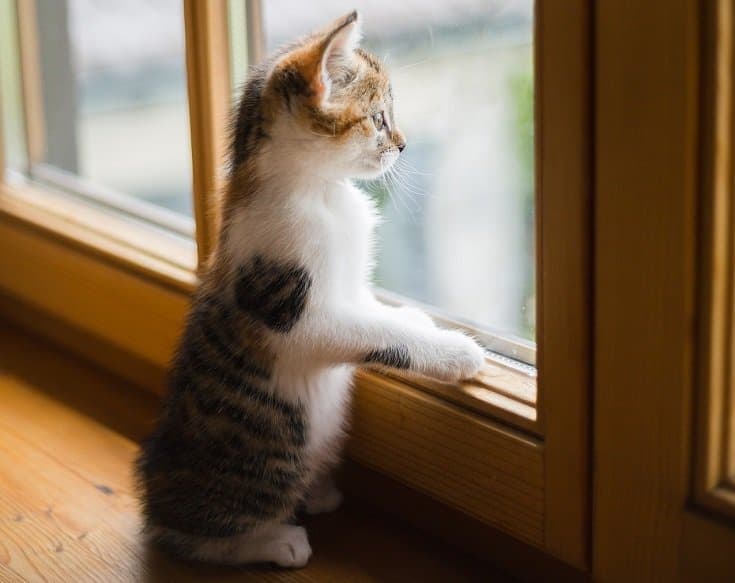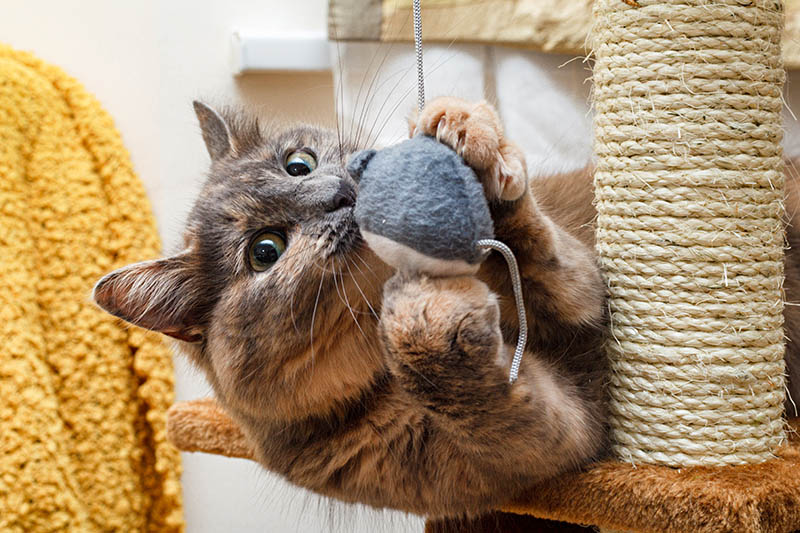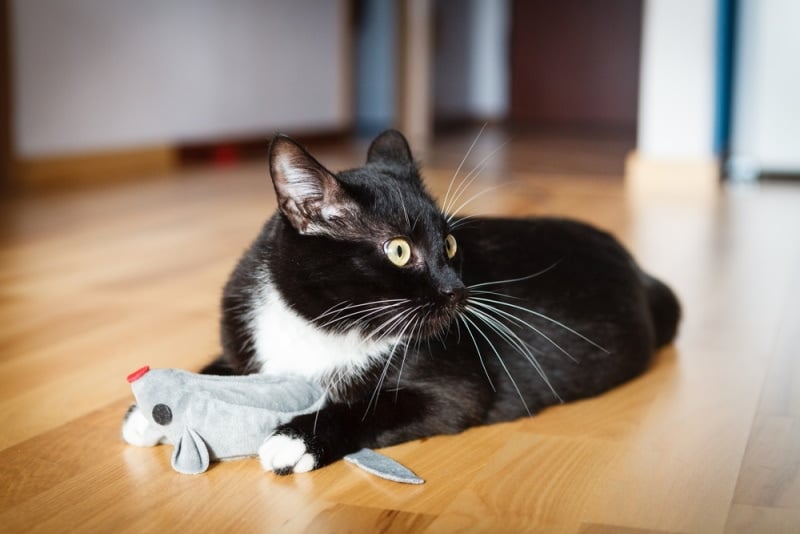Although cats are often thought of as not very interested in humans, they are sensitive, loving creatures that become deeply attached to the people they share their lives with. Companion cats form bonds with their humans similar to those formed between infants and their caregivers, so it makes sense that some struggle when their source of love, affection, and security is not available.
Since the presence of their favorite human also helps cats manage anxiety, some find it very difficult to be left alone. Cats that cry when their favorite person leaves the house often suffer from separation anxiety.


What does separation anxiety look like in cats?
Cats with separation anxiety often urinate and defecate outside the litter box and spend a lot of time crying and making noises. They may also groom themselves excessively and engage in destructive behavior when experiencing loneliness anxiety.
Female cats are more likely to show their distress through grooming issues, and males are often more inclined to be destructive. Many cats who develop separation anxiety want to spend a lot of time with their favorite person and follow them around to get their companion’s attention.

Are There Factors That Predispose Cats to Develop the Condition?
Certain characteristics appear to increase the likelihood that cats will develop the condition, including being only pets and routine changes such as moving or adopting a new family. Many cats become distressed when their favorite person has a schedule change due to a new job or a longer commute.
It is also seen more often in female cats and in exclusively indoor pets. Hand-raised or orphaned kittens sometimes develop into cats with anxiety issues when abandoned. Because cats are experts at hiding signs of illness, changes in behavior are often the only clues that something may be wrong, so consult with your veterinarian to make sure there is no underlying physical condition that could be the cause. of behavior.


Are there ways to help cats with the condition?
There are several ways to encourage cats to be happy, healthy, and fluffy, which can sometimes help manage stress and anxiety. There are also options, such as working with a behavioral therapist, that can help in particularly complex situations.
1. Activities
Enrichment activities can keep cats busy when left alone, which can reduce the stress they feel by simply giving them something else to focus on. Soft music designed specifically for cats can help provide a calming environment and something to keep pets company during the day.
Puzzle feeders that require cats to work for their meals can keep them occupied with something they like (snacks) long enough for them to forget they’re upset that you’re leaving.

2. Keep Things Soft
Help your cat feel comfortable when you leave and come home by making activities around your departure and arrival non-eventful. Giving cats something to do while you get ready can distract them from the stressful prospect of being alone.
3. Reward What You Want to See
Punishment never works with cats, and it can increase their stress, which can make the problem worse. Since cats are very sensitive and interested in pleasing their favorite people, rewarding them with what you want to see is usually the key to getting them to move in desired directions.
Consider giving your cat praise and treats when you “catch” them hanging out by themselves and otherwise act confidently when you’re home. You can also give them treats and cuddles when they stay calm when you get home.
4. Create a Routine
Cats sometimes become stressed when their favorite human’s routine changes, and they’re not available to give love when pets rely on cuddles and fun.
Try to create and stick to a routine so your cat can go about their day knowing they’ll have cuddle time before bed or after the dishes are put away.

5. Relaxation
You can teach your cat to stay relaxed during your absence, in part by regularly giving them praise and treats when you see them calm. Start small and reward them when they hang out and seem relaxed.
Eventually, get up and introduce a cat bed that your cat can start to associate with being cool and peaceful. Once your cat gets used to being nice and relaxed while hanging out on the bed, practice leaving and reward them for staying calm on their bed while you leave the room.
6. Professional Assistance
If you’ve tried everything and still don’t seem to be making any progress when it comes to leaving your cat alone, consider getting help! Your veterinarian may be able to provide guidance on behavior modification techniques, and they may also be able to evaluate whether medication may be helpful in your cat’s particular situation. There are also veterinary behavioral therapists who can help.


Conclusion
Cats who get upset and cry when their favorite people leave may be suffering from separation anxiety. Separation anxiety often causes cats to leave the litter box, groom themselves to the point of excess, and engage in destructive behavior.
Single indoor cats and those that have been weaned early can develop intense attachment types that lead to separation anxiety. Although a veterinarian should always examine cats to rule out other causes of the behavior, some things can improve the situation, such as providing fun things for your cat to do and enforcement of activities, which often increase cats’ sense of comfort.
Featured Image Credit: SoNelly, Shutterstock


